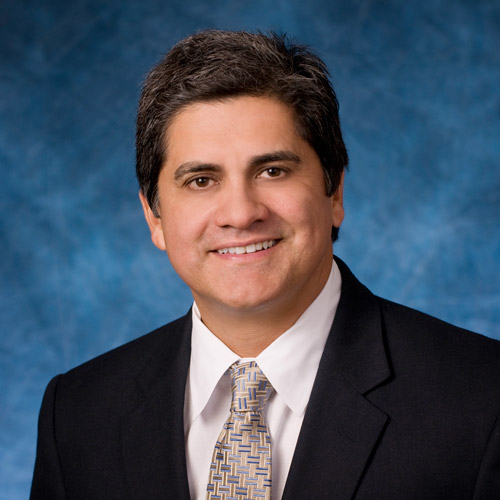
Benedict Cabrera is an international IT leader in the sustainable energy space, but he never thought of himself as particularly “techy.” The Cuban American US marine is now director of business systems for the $1.7 billion energy-from-waste (EfW) provider Covanta. After maintaining jet fighters as a mechanic in the Marines, he began his civilian career as an engineer in the aerospace industry. There, he worked for more than a decade, eventually becoming program manager running a $110 million dollar profit-and-loss statement.
In his late thirties, he moved to the pharmaceutical industry where he held various leadership roles over eleven years. Working in pharma, Cabrera got his first exposure to IT, several years later in life than most leaders in the field. The broad variety of leadership experiences in his background, however, has given Cabrera a unique perspective and ability to find out-of-the-box solutions for the EfW field.
“My approach since transitioning into IT has been to consider solutions from a business technologist perspective,” he says. “My first step is to focus on what we are trying to accomplish and its impact on revenue. I then look at the requirements and processes needed, then work backward from there to find the right technology,” he explains. “Colleagues often want to move immediately to technology as a quick solution, but that’s like having the tail wag the dog.”
Cabrera’s look-before-you-leap mindset is critical in his role, as he is responsible for managing Covanta’s enterprise-level application portfolio. He interfaces with all of the various areas of business, both at a tactical and a strategic level.
Covanta converts 20 million tons of residential and industrial waste a year into nine million megawatts of power, enough juice for a million homes. The company also recycles more than 500,000 tons of metals annually, which is the equivalent of five Golden Gate bridges. With over forty power plants across the country, the company was been awarded the Clean Air Technology Award in 2014 and is considered a green company by the Environmental Protection Agency. The business offers an alternative to landfills, and helps prevent the consequent release of methane gas.
Despite the energy industry’s downturn due to depressed oil prices, Covanta has been able to maintain its revenue stream. The company generates the bulk of its revenue from its waste management activities and long-standing community partnerships. In recent years, Covanta has positioned itself as a complete waste solutions provider for its clients and in doing so, is doubling down on it clean, green approach.
Coming from a time when it only ran EfW power plants, Covanta has expanded its environmental services capabilities by building a network of material processing facilities to assist companies seeking solutions to some of today’s most complex environmental challenges.
“We want to be a complete waste solution company,” Cabrera says. “Whether it’s paper, liquid, sludge, metal, or any number of other categories, our goal is to provide the complete solution that will take it off your hands.”
During his six years with the company, Cabrera has implemented business-focused tech solutions in a number of ways. He led the expansion of the company’s enterprise resource planning (ERP) software platform to run across the entire organization including finance, procurement, inventory, and plant maintenance. He also moved the company to an ongoing update model that keeps Covanta’s systems on the latest version. “We’re moving away from that big-bang, every-three-year upgrade, to a fast, consistent, and continuous improvement approach,” he says.
In addition to ERP, significant transformative changes are occurring in other areas of the business through the use of data management and visualization tools that allow employees to understand and use information quickly. His team is also in the process of “mobilizing Covanta,” which Cabrera says will provide enormous benefits in areas like sales, plant operations, and the back office. “These updates will ultimately help us increase revenue as we drive the organization forward,” he says.
Not all changes are on the front-end of the business. Right now, about 75 percent of Covanta’s operational infrastructure is in the cloud. Cabrera is working closely with the IT infrastructure team to move the remaining 25 percent to Amazon Cloud Services by the end of summer.
“We believe we are the first organization in our industry to move everything to the cloud,” he says. “Our move will save money, but what it really does is allow us to leverage the cloud to grow and scale. If you acquire companies of whatever size, you’re motivated to integrate the acquisitions as rapidly as possible to support the new business model.”
“We believe we are the first organization in our industry to move everything into the cloud. Our move will save money, but what it really does is allow us to leverage the cloud to grow and scale.”
In the past year and a half, the company has made a number of strategic acquisitions as a way of broadening its operations, to the point that it can be a one-stop shop for its customers. Cabrera has been leading portions of the integration process with the new companies, a process that he says is challenging, irrespective of the size of the acquisition.
“Whether it’s a large or a small company, many of the core processes remain the same,” he says. “It doesn’t matter if the company has 150 employees or 1,500.”
Moving forward, Cabrera identifies three key goals for Covanta: continuous improvement in its operations, growing the environmental services business, and expanding its base of EfW plants. The increasing proliferation of technology across the business guarantees that IT will play a significant role in all of these areas, Cabrera says.
Covanta IT efforts are currently focused on a new plant under construction in Dublin, Ireland, slated to be operational by 2017. “An enormous amount of IT effort goes into building these plants,” Cabrera says. “In addition to the expected networking, monitoring, and control systems, IT must account for safety, data reporting, and analysis systems, just to name a few examples.” Moving forward, Covanta plants will strongly benefit from the Internet of Things technologies being implemented, which seek to collect and analyze plant performance information via the Internet.
The first four years of Cabrera’s tenure at Covanta involved implementing tech at a foundational level needed for a global company—making major changes across the enterprise and improving core functional areas. Now, his team is working on projects that are smaller in scale, but aim to transform the way colleagues think and work. These are just as critical to the corporate structure and its ability to increase efficiency and build shareholder value, he says.
“The foundation of the house is set and we’ve got the first floor well underway; now the focus is on what the rest of the house is going to look like,” Cabrera says. “The next steps will be the most exciting.”

